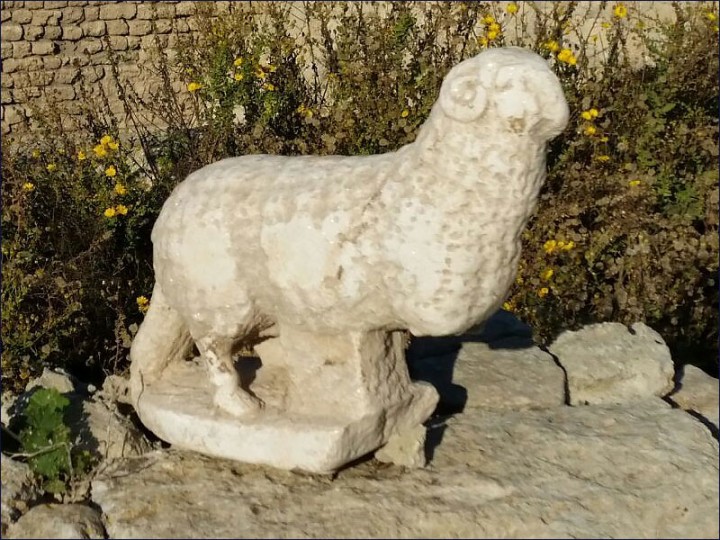Usually news about science are related to health, technology or social behaviour studies. Archaeology is not featured that often. But some of the discoveries are quite impressive and done timely so they might be interesting for the readers of science news. Like this one – just before Christmas in the excavations of a Byzantine-period church in Israeli town Caesarea an impressive marble statue of a ram was unearthed.

This sculpture of a ram is actually a symbol of Christianity or even Jesus. It was unearthed in Caesarea and is dated to 6-7th century. Image courtesy of Israel Ministry of Foreign Affairs, mfa.gov.il.
The discovery was made in the morning of Christmas Eve by the Israel Antiquities Authority. Scientists say that ram as a symbol is quite important for Christianity itself. Ram is an ancient Christian symbol for Jesus, which, in addition to the time of the reveal, is an interesting coincidence. It is so because Jesus is often described as a shepherd taking care of his flock. In many art pieces ram is depicted carried on the shoulders of the "Good Shepherd". Or simply standing by the side of Jesus. Therefore, for Christians ram, much like a lamb, represents faithfulness or even Jesus.
However, ram has been used in symbolism in other religions as well. For example, in Roman art it is usually depicted by the Greek gods Hermes and Mercury and represents. In Egyptian mythology ram represents the god Amun – one of the most important gods for ancient Egyptians. Discovery of impressive sculpture of ram is therefore very important and interesting finding, which, according to the scientists, there are many in Caesarea.
Peter Gendelman and Mohammad Hater, directors of the excavation, said: "In ancient Christianity Jesus was not portrayed as a person. Instead, symbols were used, one of which was the ram. It may or may not be a coincidence, but the statue was uncovered on Christmas Eve. The statue that we found might have been part of the decoration of a Byzantine church from the sixth–seventh centuries CE at Caesarea. By the same token it could also be earlier, from the Roman period, and was incorporated in secondary use in the church structure".
Because there are many excavations in Israel at the moment, we may expect many new discoveries made in the near future. In fact, such findings are so highly valued and important, institution that announced about it is actually Israel Ministry of Foreign Affairs and not some kind of science institute or university.
Story Source:
The above story is reprinted with permission of Technology.